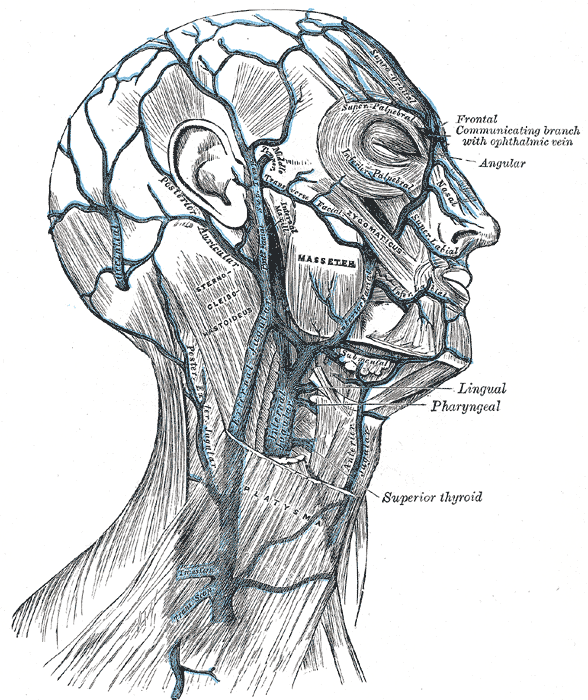Contents:
1) Spinal part of accessory nerve.
2) Lesser occipital nerve (C2)
3) Great auricular nerve (C2,C3)
4) Transverse cutaneous nerve of the neck (C2,C3)
5) Supraclavicular nerve(C3,C4)
6) Muscular branches to the levator scapulae(C3,C4),trapezius(C3,C4) and rhomboideus(C5).
7) Trunks of brachial plexus
8) Suprascapular nerve(C5,C6)
9) Nerve to subclavius (C5,C6)and serratus anterior(C5,C6,C7)
10) Transverse cervical artery and vein
11) Occipital artery
12) Third part of subclavian artery and vein
13) Suprascapular artery and vein
14) External jugular vein
15) Lymph nodes along the posterior border of sternocleidomasstoid,supraclavicular lymph node.
Occipital artery:
It arises from the external carotid artery just opposite to the origin of facial artery.It runs along the posterior belly of digastric,crossing the carotid sheath, accessory and hypoglosssal nerve.Then it runs deep to mastoid process and to the muscles attached to it.The artery then crosses the rectus capitis lateralis,superior oblique,semispinalis capitis.Finally it pierces the trapezius and comes to lie along the greater occipital nerve.

External jugular vein:
It lies deep to platysma.it is formed by the union of the posterior auricular vein and posterior division of retromandibular vein.
It begins with the lower part of the parotid gland,crosses the sternocleidomastoid and it ultimately opens into the subclavian vein.

Tributaries:
1) posterior external jugular vein
2) anterior jugular vein
3) transverse cervical vein
4) suprascapular vein.
